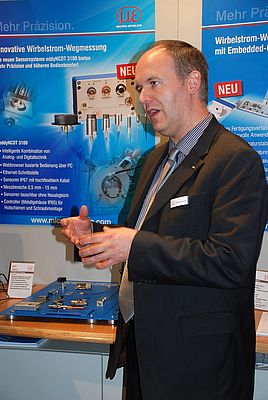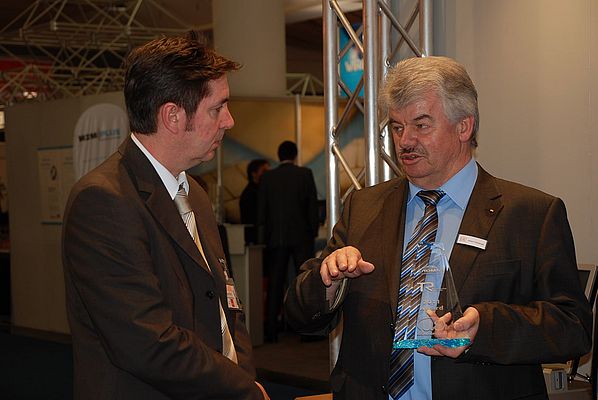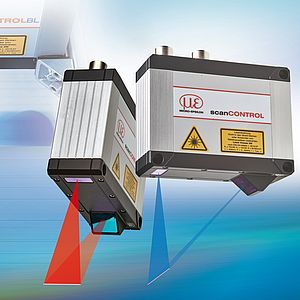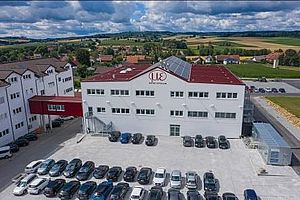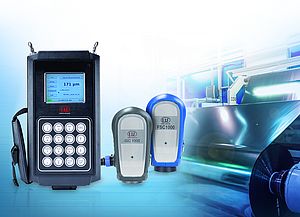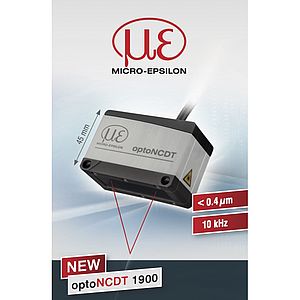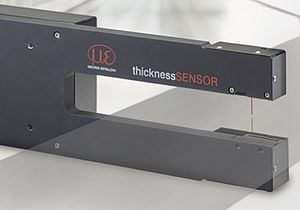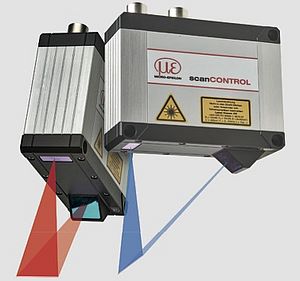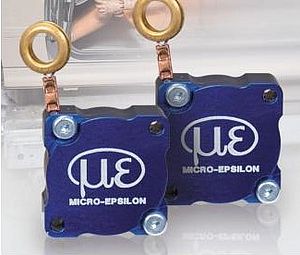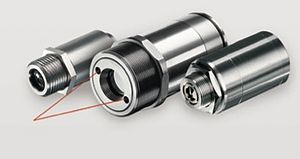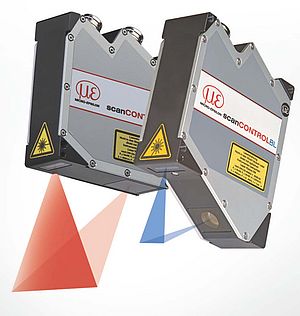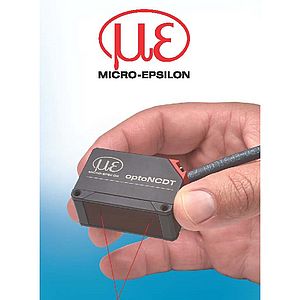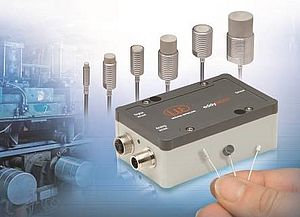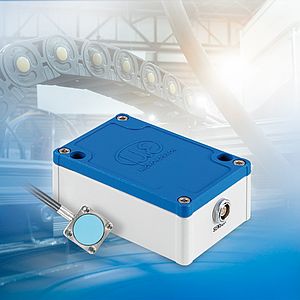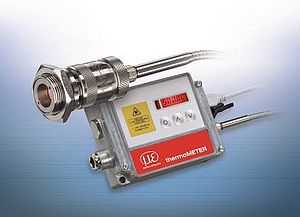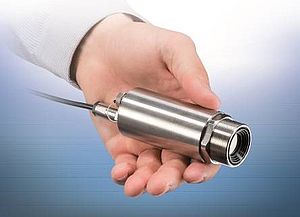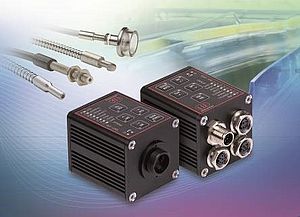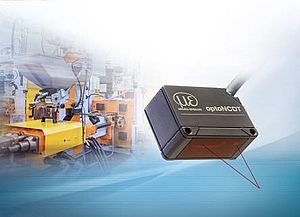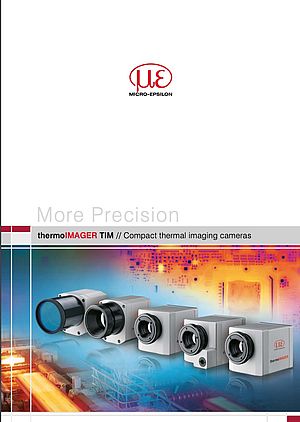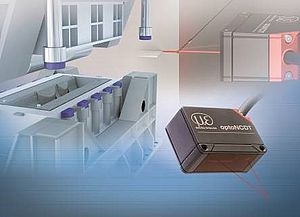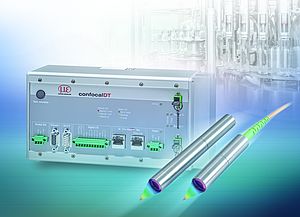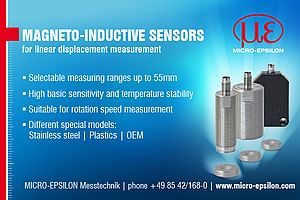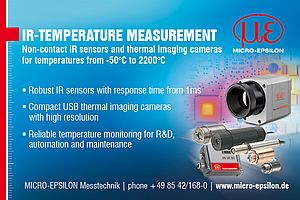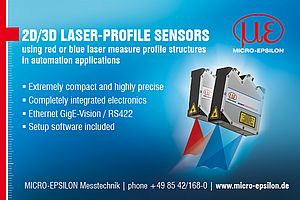The May issue of IEN Europe featured a technical article on the new Embedded Coil Technology (ECT) from Micro-Epsilon, which makes capactive and eddy current sensors robust for the use in harsh environments. During this year’s Hannover Messe, editor Jürgen Wirtz got a chance to talk to Micro-Epsilon, in order to learn more as to why and how this technology was developed.
IEN: The Embedded Coil Technology makes capacitive and eddy current sensors more robust to harsh conditions. Was this technology developed due to customer demands and because the regular sensors didn’t work anymore, or was it developed out of your own initiative?
Salzberger: We actually had orders from customers where the regular sensors had reached their limits. But thanks to one of the special strengths of the Micro-Epsilon group, we were able to solve that problem. In close cooperation with our subsidiary Micro-Hybrid we were able to develop the ECT sensor technology to meet those customer demands.
IEN: How exactly do you obtain the robustness of the sensors?
Hoenicka: In contrast to regular sensors, there is no spooling involved in the ECT technology. In fact we have spatially arranged coil elements that are completely encapsulated by the carrier material. Due to this, those sensors offer extremely high temperature and mechanical stability.
IEN: Which new materials do you use, and how does the manufacturing technology differ from the regular one?
Salzberger: Which material we exactly use is of course our company’s secret. What I can say is that it is an inorganic carrier material. Apart from the electric functional components, the ECT sensors consist completely of this carrier material. They are manufactured by our subsidiary Micro-Hybrid in Hermsdorf, Germany, that has the necessary expertise.
IEN: How far is the scope of application extended, and for what kinds of application are the sensors especially suited?
Hoenicka: Thanks to the new manufacturing technology, the sensors can be used at temperatures of more than 350 °C, which signifies a huge leap in temperature stability. Furthermore, the sensors can be adapted to customer geometries. This means that the technology is especially suitable for difficult mounting conditions. If required, the sensors can be hermetically encapsulated. That way, they can also be used in ultra-high vacuum. To sum it up: ECT sensors are used where high temperature as well as long-term stability or customer-specific design is required.
IEN: Which specific applications have been realized with the new sensors up to now?
Salzberger: The sensors have been successfully installed at the space telescope LAMOST in China, or in mechanically demanding refiner applications, i.e. wood processing for the paper industry. Currently the sensors are being installed in other telescope projects.
IEN: Does the fact that the ECT sensors are separately manufactured for each application mean that they are much more expensive than regular capacitive or eddy current sensors, and is there a minimum purchase quantity?
Salzberger: As those sensors always require an individual design, the use of the ECT technology pays off only at a certain quantity. However, this very much depends on the specific application, so a general rule of thumb is almost impossible to set up. The price necessarily depends on the purchase quantity, and can be above but also below the price of regular sensors. Economies of scale take effect here.
IEN: Do you intend to incorporate the Embedded Capa or Coil Technology in your standard sensor portfolio as well, in order to make those products more robust in general? If so, when will that take place?
Hoenicka: Actually, we do think in this direction. But primarily we are currently further developing our standard eddy current sensors portfolio. There is still a high demand for different types of sensors in that area. One example for that is our new eddyNCDT 3100 sensor, which contains an integrated memory. All the crucial sensor characteristics are stored within that memory, a feature that supersedes a new calibration in case of a sensor replacement. Furthermore, a new clever web interface facilitates the handling.
IEN: Gentlemen, thank you very much for the interview.


